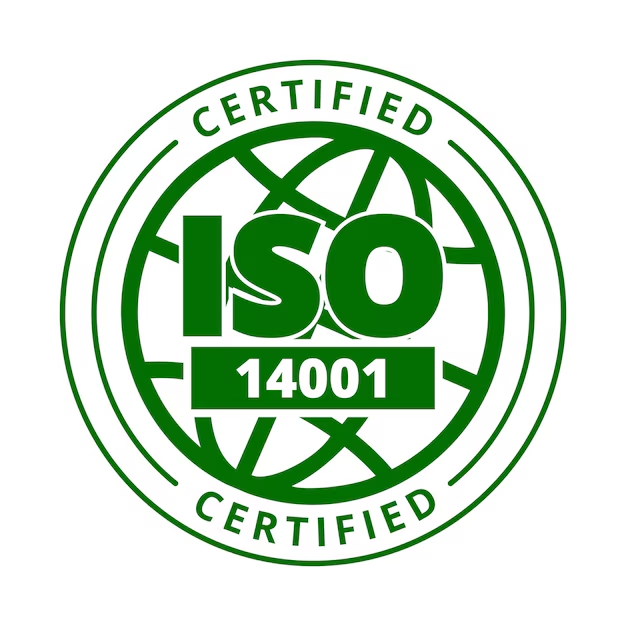Let’s be real for a second—most people hear “environmental certification” and immediately think about tree-hugging, recycling bins, or maybe cutting down on single-use plastics. And sure, that’s part of the picture. But ISO 14001? It’s not just about going green—it’s about running lean.
This standard, which forms the backbone of many serious environmental management systems (EMS), does a whole lot more than tick sustainability boxes. When implemented with intention, it can become a silent partner in helping businesses trim the fat—cutting costs, boosting operational efficiency, and tightening up systems that may have gone a bit… well, sloppy.
So if you’re wondering whether ISO 14001 Certification is worth the effort for your organization, especially from a financial or operational lens, let’s walk through it together—warts and all.
Not Just Another Certificate to Frame on the Wall
It’s tempting to treat ISO certifications like trophies—earned after a project, hung in the hallway, and forgotten. But ISO 14001 is different. This one isn’t about checking boxes or putting on a green facade for the public. It’s a practical, living framework that forces you to get under the hood of your operation.
Think of it like hiring a business coach who never sleeps—constantly nudging you to question your processes, your inputs, your waste, and yes, even your logic. And that constant questioning? It’s exactly what leads to savings.
Let’s Talk About Waste (And We Don’t Just Mean Garbage)
Waste wears many hats. It could be raw materials tossed due to poor handling. It could be water gushing out longer than needed during a rinse cycle. Or energy spent lighting up areas that sit empty half the day.
Now, ISO 14001 encourages a company to map out all those flows—material, energy, water, emissions—and evaluate how much is used versus how much is lost. Spoiler: there’s usually more loss than you think. But once you see it on paper, something changes. You stop accepting “that’s just how it is,” and start fixing.
For instance, one mid-sized food packaging firm—let’s call them Evergreen Pack—used the ISO 14001 framework to monitor their cleaning process. Turns out, they were using double the water needed due to outdated nozzles and unclear cleaning schedules. A $3,000 nozzle upgrade later? They cut their monthly water bill by 18%. That’s not fluff—it’s utility savings that go straight back into the business.
Efficiency Isn’t a Buzzword. It’s a Byproduct.
Here’s the thing—when you apply a standard like ISO 14001 with care, it naturally peels back inefficiencies you didn’t even realize were embedded in your daily operations. Everything starts getting tighter—cleaner handoffs between departments, fewer delays, better vendor compliance, and quicker corrective action when something goes wrong.
This level of operational awareness leads to faster decision-making. You’re not just guessing or going by gut; you’ve got data. You’ve got structure. It’s like switching from scribbled notes to a GPS system—fewer detours, less second-guessing, and a lot less wasted fuel (literally and metaphorically).
And while we’re on metaphors—think of ISO 14001 as that friend who gently but firmly tells you your “organized chaos” isn’t really working anymore. It pushes you to systematize things, reduce duplication, and keep your processes lean without losing their humanity.
Hidden Gold: Procurement and Supply Chain Gains
ISO 14001 has this ripple effect that reaches deep into your supply chain. Once you start expecting better performance from your materials and suppliers—from delivery schedules to packaging practices—your suppliers step up.
Why? Because they want to keep your business. And when you make environmental performance part of your criteria, they either shape up or ship out. Either way, you win.
It’s not uncommon for companies pursuing ISO 14001 to renegotiate contracts that favor cleaner, more efficient suppliers—ones who also help cut down on packaging waste or reduce transportation emissions. That means you’re not just reducing your own waste footprint but shrinking your indirect costs too.
Honestly, better supply chain behavior doesn’t just reduce waste—it lowers risk. And fewer surprises in logistics mean fewer delays, fewer “uh-oh” moments, and fewer dollars leaking out the back door.
Maintenance, Downtime, and a Little Something Called Predictability
What do unplanned downtime, malfunctioning equipment, and repeat maintenance calls have in common? They all suck money out of your budget faster than you can say “unexpected expense.”
Here’s where ISO 14001 pulls its weight again. When you’re tracking environmental metrics, you often end up collecting peripheral data too—like energy surges, pressure drops, or temperature spikes that can hint at brewing mechanical issues. Over time, those little breadcrumbs create patterns. And patterns create foresight.
Imagine spotting a compressor running hotter than usual—weeks before it breaks down. You schedule a quick inspection, swap out a $40 valve, and keep production humming. Now imagine what happens if you didn’t notice. Not pretty.
So yes, ISO 14001 may not look like a maintenance tool on the surface. But the systems thinking it enforces? That kind of vigilance pays dividends—especially when it saves you from halting production for an emergency fix.
Resource Management: The “Well, That’s Obvious” Section
Sometimes the gains from ISO 14001 feel so obvious, you wonder why it took certification to act on them. You start metering energy use in specific departments. You spot a spike in HVAC demand on certain days. A quick audit reveals poor insulation near your loading dock. $400 worth of sealing later? A 12% dip in energy usage.
You notice cardboard piling up unnecessarily. You talk to your packaging team. Turns out they’re doubling up boxes because of one client’s previous complaint. But that complaint was two years ago. A simple redesign and a phone call later? You’re back to standard packaging and saving thousands annually.
These aren’t dramatic changes. They’re micro-shifts. But stack them up, and they start making a serious dent in your operating costs.
Culture Change? Oh Yeah, That Happens Too.
Let’s not ignore the human element here. certification iso 14001 changes how people think. Employees start noticing waste where they didn’t before. Suddenly, turning off unused machines or printing less isn’t just a suggestion—it’s part of the culture.
That kind of grassroots shift? You can’t buy it with a flashy training session or a new company policy. It comes from being involved in something meaningful. When employees see the bigger picture—that saving energy or reducing materials waste actually protects jobs, slims expenses, and boosts the company’s credibility—they lean in.
And here’s a nice bonus: retention often goes up when employees feel engaged in a mission bigger than the bottom line.
Speaking of the Bottom Line…
We’d be remiss not to talk ROI. What does certification cost? Depends on the size and scope of your operation. But generally, you’re looking at a few thousand dollars in consultant fees, documentation, audits, and some internal labor time.
What do you get back? Companies commonly report savings ranging from 5% to 20% on operating costs within the first 12 to 18 months post-certification. That doesn’t even count the savings from avoided fines, fewer workplace incidents related to hazardous waste, or better insurance premiums due to risk reduction.
And let’s not forget the long game. Companies that stay ISO 14001-certified often secure better contracts, especially with corporate or government clients that prioritize environmental responsibility. That kind of strategic edge can pay for itself ten times over.
So, Is It Worth It?
You know what? If you’re serious about running a tighter, smarter operation—and not just slapping a green label on your company website—then yeah, ISO 14001 Certification is absolutely worth the effort.
It’s not magic. It won’t fix everything overnight. But it will start conversations, spark changes, and create momentum that leads to real, tangible savings.
If anything, it makes your business less reactive and more thoughtful. Less scattered and more strategic. And honestly? That’s not just an environmental win. That’s a business win.































